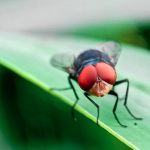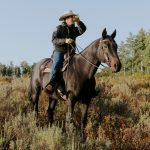Aggie influencers

One of the strangest offshoots of the modern digital communications world is the creation of the job “influencer.” Now, I’ve had a lot of “influencers” in my life. Of course, the first were my parents.
Second were neighbor kids that I looked up to and tried to emulate.
Third were disciplinarian teachers in grade school who threatened the use of a paddle and would follow up with the threat if needed.
Fourth were college instructors who would as soon flunk you as pass you if you didn’t pay attention or were a troublemaker.
Fifth were bosses in my career who were either great mentors, teachers and supporters or incredibly inept on all accounts.
However, none of the folks mentioned above would have considered themselves “professional or career influencers.”
So, just what is the definition of an “influencer” today? Google says an influencer is an individual who has established credibility and a significant following within a specific niche or industry. They leverage their expertise, personality, and online presence to influence the opinions, behaviors and purchasing decisions of their followers. Influencers typically have a strong presence on social media platforms such as Instagram, YouTube, TikTok, or blogs, where they create and share content related to their niche. The key role of an influencer is to engage and connect with their audience by creating compelling and authentic content. Influencers can have a significant impact on consumer behavior and play a crucial role in shaping digital marketing strategies in today’s social media-driven landscape.”
That may be the official description of “influencer,” but it all sounds like a lot of hooey and hoakum to me. I have enuf trouble trusting myself to make good decisions without relying on the puffery of weird total strangers and their beliefs, habits, experiences, and product uses.
But. apparently “influencers” are here to stay. Agriculture is probably lumped in there somewhere, too. So, here are some hypothetical “Aggie Influencers” who I might pay attention to — who might influence my opinion, behavior or purchasing decisions.
• A grain merchandiser who hits the top of the market 95% of the time.
• A purebred cattle breeder whose cattle grade 95% prime on the rail.
• A horse breeder who sells colts and fillies that run Register of Merit on the race track 95% of the time.
• A seed producer who sells 100% pure seed.
• A pork producer who raises pigs with pork that is both flavorful and tender.
• A poultry geneticist who breeds hens that consistently lay two eggs per day.
• A manufacturer who develops a big round hay baler that rolls out a perfectly symmetrical bale every time.
• A beef feedlot nutritionist who develops a ration that induces cattle to gain more than 6 pounds per day.
• A tomato breeder who develops a flavorful tomato variety that is totally resistant to all diseases.
• A scientist who creates a “self-destruct gene” into eastern redcedar, sericea lespedeza and bind-weed.
• A sheep or goat breeder who produces lambs or kids without a death wish.
• A herding dog breeder who sells pups that never want to kill chickens.
• An economist who gives business advice who has a history of successfully running a profitable, private business.
• A statesman/stateswoman politician who is honest and who retires after two terms in office no wealthier than when he/she came into office.
***
I recently ran across some old beef cattle research that might be worth re-visiting. The old study conducted at Colorado State University showed a link between bulls’ fertility and the patterns of hair on their heads. The researchers — including Temple Grandin — found bulls with perfectly symmetrical hair whorls in the middle of their foreheads may be more fertile than bulls with odd-shaped whorls. The study suggests that using hair whorls is an indicator that could save time — and is cheap and easy — when testing for breeding soundness in bulls. The theory is, if there’s some kind of disruption to the calf in the womb during gestation, it can cause a hair whorl on the face to take an abnormal shape, and can also affect the reproductive system. Hair patterns and reproductive systems generally develop in the womb at the same time.
Now, I have no idea how to truly evaluate how reliable the hair whorl research is but I can tell you this with certainty. I have. a “double crown” of hair whorls on the back of my old noggin — and back in the day I sired two beautiful daughters.
***
Well, I won 2 1/2 battles in my sweetcorn war with the masked bandit raccoons. I successfully harvested all the ears from my last two sweet corn plantings. All the cool weather we’ve had in the Flint Hills has my garden still producing tomatoes, peppers, green beans and shelled dry beans. The okra will be ready within the week.
***
Words of wisdom for the week: “I get most of my exercise these days from just shaking my head in disbelief.”
Have a good ‘un.







